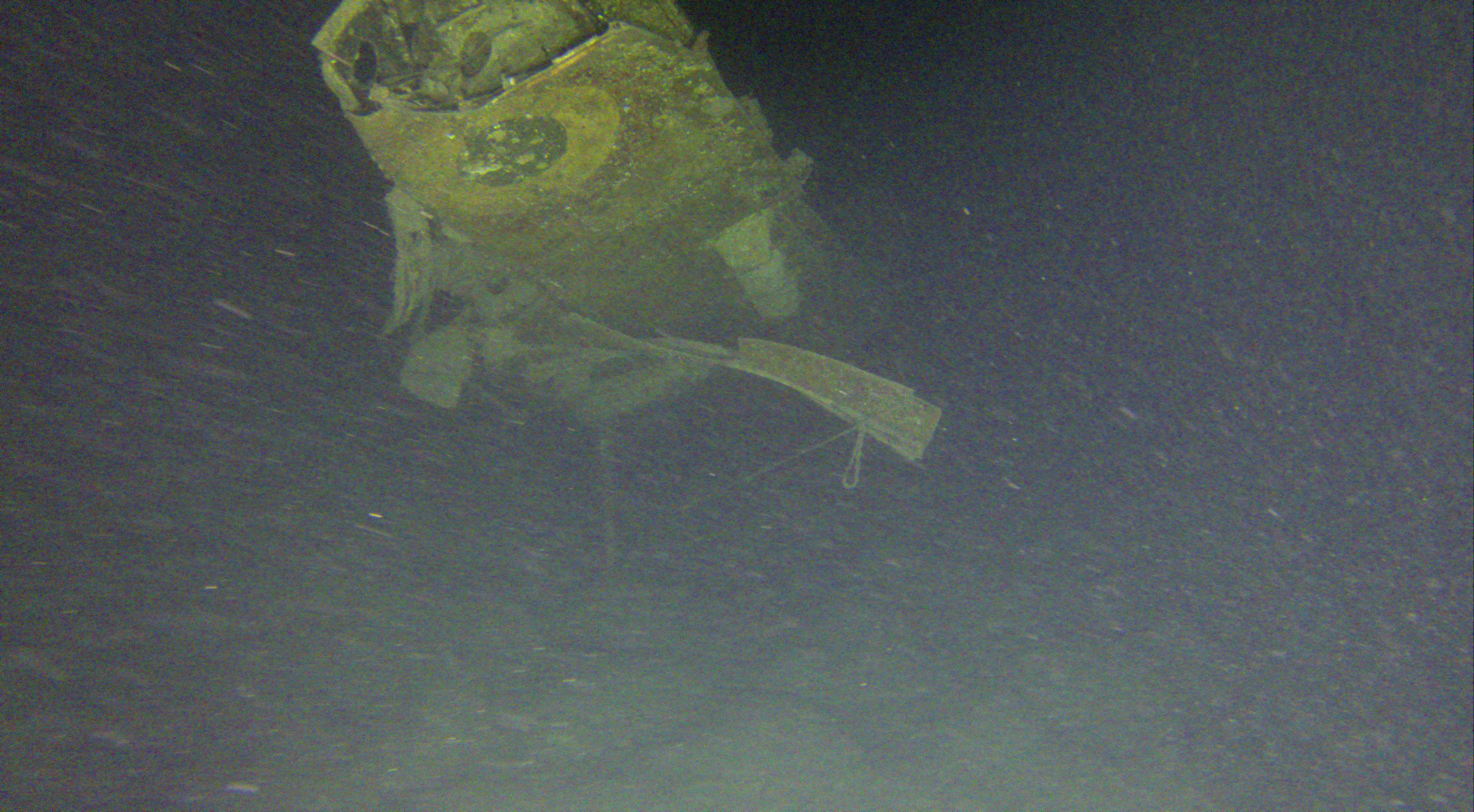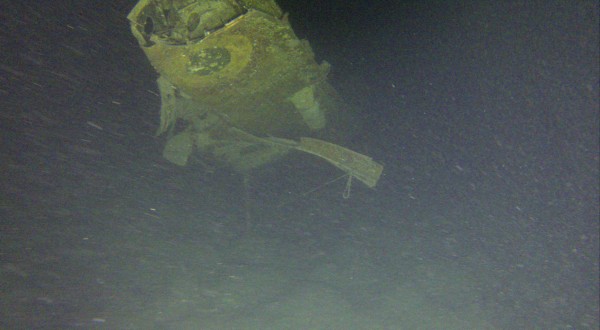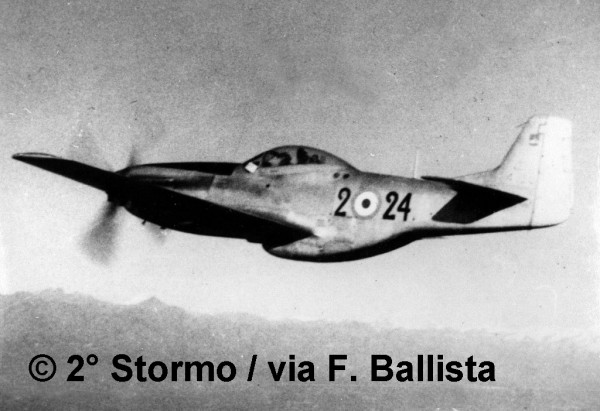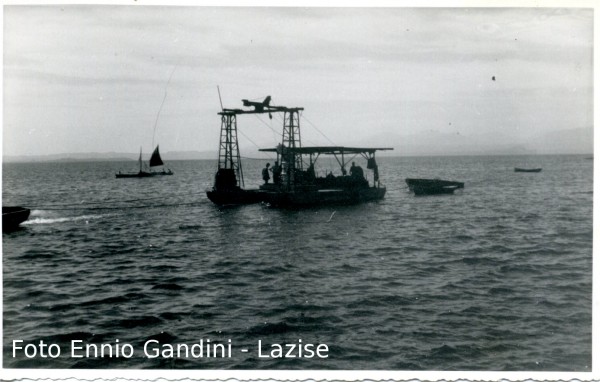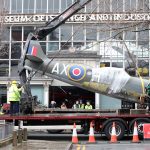Warbirds News is proud to present an original article on the recent rediscovery of an Italian Air Force F-51 Mustang in a lake. The article was originally written in Italian by Luciano Pontolillo, president of the Italian Aviation Association I-CARE.We have translated and edited his words for you here.
It’s 4:55pm on a steamy summer afternoon in Lazise, a small town on the banks of Lake Guarda in northern Italy. August 7th, 1951 is not a date the citizens of Lazise present will easily forget, as many undoubtedly heard the terrifying sounds of an aircraft in trouble heading past the town at extremely low altitude towards the lake, swiftly followed by the impact and then simply silence. The aircraft was an F-51 Mustang piloted by Lt. Paolo Tito of the Italian Air Force, who sadly lost his life in the accident.
On the afternoon of April 5, 2013, members of a local amateur sub-aqua club, The Volunteer Association of Garda, identified parts of the wreck on the lakebed at about 60 meters deep. They immediately launched an investigation to determine which plane it was and confirmed their initial assumptions: it was indeed Lt. Tito’s F-51 Mustang.
Thanks to the cooperation of the Italian Air Force, who provided accident reports ( click HERE to read the original report), and the contribution from local eyewitnesses, it was possible to accurately reconstruct the events of this unfortunate pilot and his airplane.
The Mustang, serial MM 4309, belonging to 92a Squadriglia C.T. of 2° Stormo, took off from its base in Vicenza at 4:40pm, heading for Orio al Serio. It should have been a routine flight. Lt.Tito, albeit young, was an experienced pilot, with a lot of Mustang time. The first leg of the journey was uneventful, but once Lt.Tito passed Valpolicella, the flight soon became difficult when the freshly overhauled engine began to show problems. Several witnesses stated they heard the engine revs increase and decrease. These issues were not serious enough to worry the pilot initially. He tried to solve the problems in flight rather than declare an emergency and land. But the engine just did not want to work properly, and soon Lt. Tito realized he was in grave danger and needed to land immediately. The aircraft lost altitude rapidly and the primary diversion airport at Ghedi, became unreachable. The only area free of obstacles was Lake Garda, so Lt. Tito decided to try his chances ditching in the water. Perhaps he thought of bailing out before the impact, but he was too low by this point. The Mustang crashed violently, bouncing off the lake surface and breaking up, leaving no escape for the unfortunate pilot.
The Italian Air Force conducted a thorough investigation, interviewing local witnesses, but versions of events provided seemed to contradict one another. In particular, two fishermen located roughly 2 km from the crash site gave two discordant versions of the facts. One told the Air Force investigators that he distinctly heard the sound of the engine, while the other fisherman didn’t hear it at all. The divers who recovered the Lt. Tito’s body in 1951 found that the pilot had unbuckled his seat belt and unlocked the canopy as if he had planned to abandon the aircraft right after the impact with the water. These elements led to the conclusion that, in the absence of direct indications from the pilot and based only on the available evidence, the accident was due to the malfunctioning engine, and not pilot error. In fact the authorities determined that Lt. Tito did everything he could to avoid his fate. The most likely hypothesis is that once he headed the plane away from the populated areas, he decided to abandon the aircraft still hoping to be at a safe jump altitude. But probably due to the reflection of the sun from the water surface, he incorrectly assessed his altitude and crashed before he could bail out.
In the days following the incident, the Stato Maggiore dell’Aeronautica commissioned a local firm to recover the pilot’s remains and, if possible, the Mustang’s guns. Sixty two years later, thanks to the testimony of Mr. Egidio Isotta of Lazise, the Associazione Volontari del Garda (Lake Garda Volunteers Association) began the historical research of the event culminating with the wreck’s rediscovery. Mr Isotta, whose father’s company had supported the scuba divers back in 1951, told the volunteers the details of those events. This precise testimony allowed the volunteers to accurately determine the impact site and to discover and identify the aircraft remains in the lake. While the Mustang’s remains are substantial, there are currently no plans to salvaged them from the lake, but hopefully something will eventually be recovered to form a memorial to Lt.Tito’s sacrifice.
Here is a video of the inspection of the aircraft ( 20 mins long).
Credits:
Luciano Pontolillo, president of I-CARE







